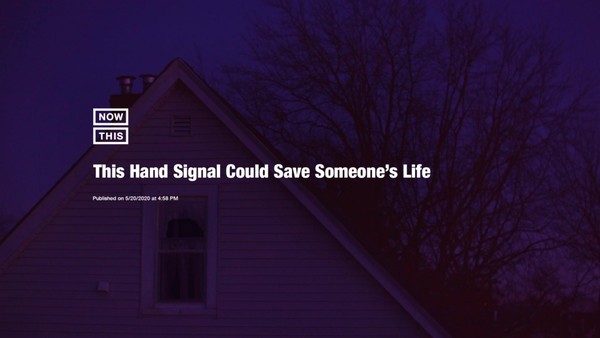Creative Effectiveness > Market
SIGNAL FOR HELP
JUNIPER PARK\TBWA, Toronto / CANADIAN WOMEN'S FOUNDATION / 2022
Awards:

Overview
Credits
Overview
Summary of the work
When disaster strikes, domestic violence increases. This is a documented fact. The COVID-19 pandemic has been a disaster on a global scale, and the Canadian Women’s Foundation was bracing for a surge in violence over the months that the virus made its way through Canada. Women facing violence at home aren’t free to do as they choose. Their communications are being monitored and they have little, if any, privacy. Now imagine how much worse that is in lockdown – there is no escape or reprieve that life before lockdown may have afforded. Asking for help would be more difficult than under normal circumstances, because a cultural shift in how we communicate changed what women in danger could “say”.
Before the pandemic, there was no simple, covert way to ask for help if you were at risk of abuse. We had to find a solution that allowed those victims to communicate with the outside world during lockdown, without being detected. Additionally, we had to find a way to widely share this tool so that more people could become aware of its meaning. For global reach, it also needed to be something that could transcend language barriers.
Our inspiration for the tool came from our collective, near-instantaneous shift to video calls. We called it the Signal For Help: an untraceable and discreet one-handed gesture designed as a continuous hand movement that could be made easily visible over a video call. The signal involves holding your hand up to the camera with your thumb tucked into your palm, folding your fingers down and trapping your thumb in your fingers. It means, “reach out to me safely”. Research was done prior to its release to make sure that it was not in conflict with any other hand signals and didn’t mean anything specific in international sign languages.
Leveraging people’s increased use of social media during lockdown, we launched the campaign online via an instructional social media asset (#SignalForHelp), demonstrating the two-step process. The post linked back to the Canadian Women’s Foundation website, where everyone could access a toolkit and FAQs which were available in English, French and Spanish. This format invited media and the public to engage with and share our key message: the pandemic has increased the danger of gender-based violence, and Signal For Help is a simple one-handed sign that can be used on a video call to discreetly reach out for help. Made to be unbranded, the design allowed it to be easily adaptable, translatable, and scalable.
We then developed a PSA to demonstrate how the signal could be used in-situ. This was showcased on Canadian TV networks, CTV and CBC, via donated media, and went viral after organically making its way to TikTok. To ensure people would know what action to take when they saw the signal, we also developed and launched hundreds of local resource hubs in partnership with women’s organizations and governments around the world, such as the Women’s Funding Network in
More Entries from Global Market in Creative Effectiveness
24 items
More Entries from JUNIPER PARK\TBWA
24 items








